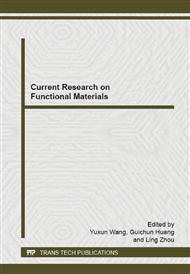p.252
p.257
p.263
p.268
p.276
p.283
p.290
p.297
p.303
Preparation and Study of EVA/Poplar Wood Powders Composite Foaming Material
Abstract:
EVA/Poplar wood powders composite foaming materials were prepared from etheylen-vinyl acetate-copolymer (EVA) as matrix, poplar wood powders as filler, azodicarbonamide (AC) as foaming agent, dicumyl peroxide (DCP) as cross-linking agent through the method of compression molding foaming. EVA with 15% VA (EVA 15) was chosen as foaming matrix resin by the rotational rheometer. The results showed that an optimum foaming effect had been gained when the AC and DCP were 11 wt% and 0.9 wt%, respectively. And under the condition, the foam density ascended with the increase of poplar wood powders content, when the content arrived to 30%, the resilience reached up to a maximum of 90.1%. The foam cellular structure was researched by SEM, and it showed that when poplar wood powders content was below 30%, the foam holes appeared round or oval, the holes’ size were rather evenly. And the foam cells became more and more unevenly, even collapsed when poplar wood powders up to the content of 40%.
Info:
Periodical:
Pages:
276-282
Citation:
Online since:
October 2014
Authors:
Keywords:
Price:
Сopyright:
© 2014 Trans Tech Publications Ltd. All Rights Reserved
Share:
Citation:


